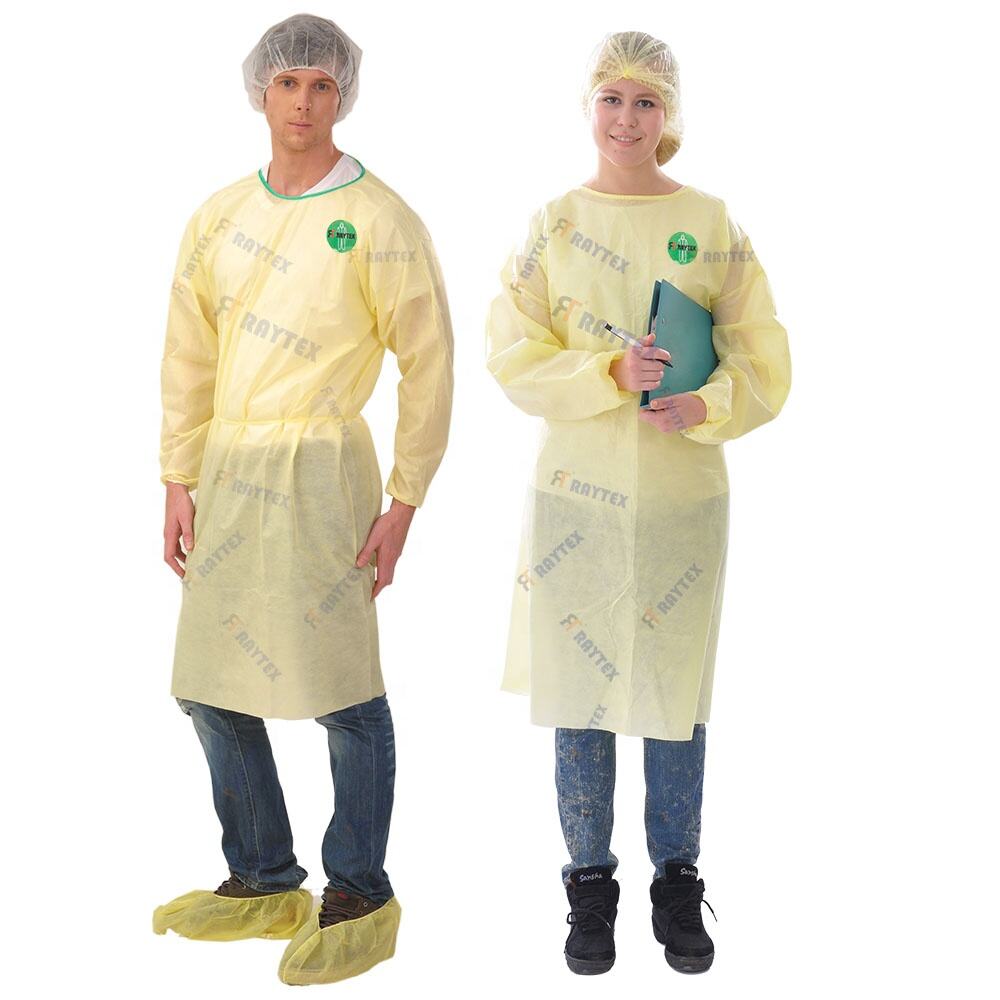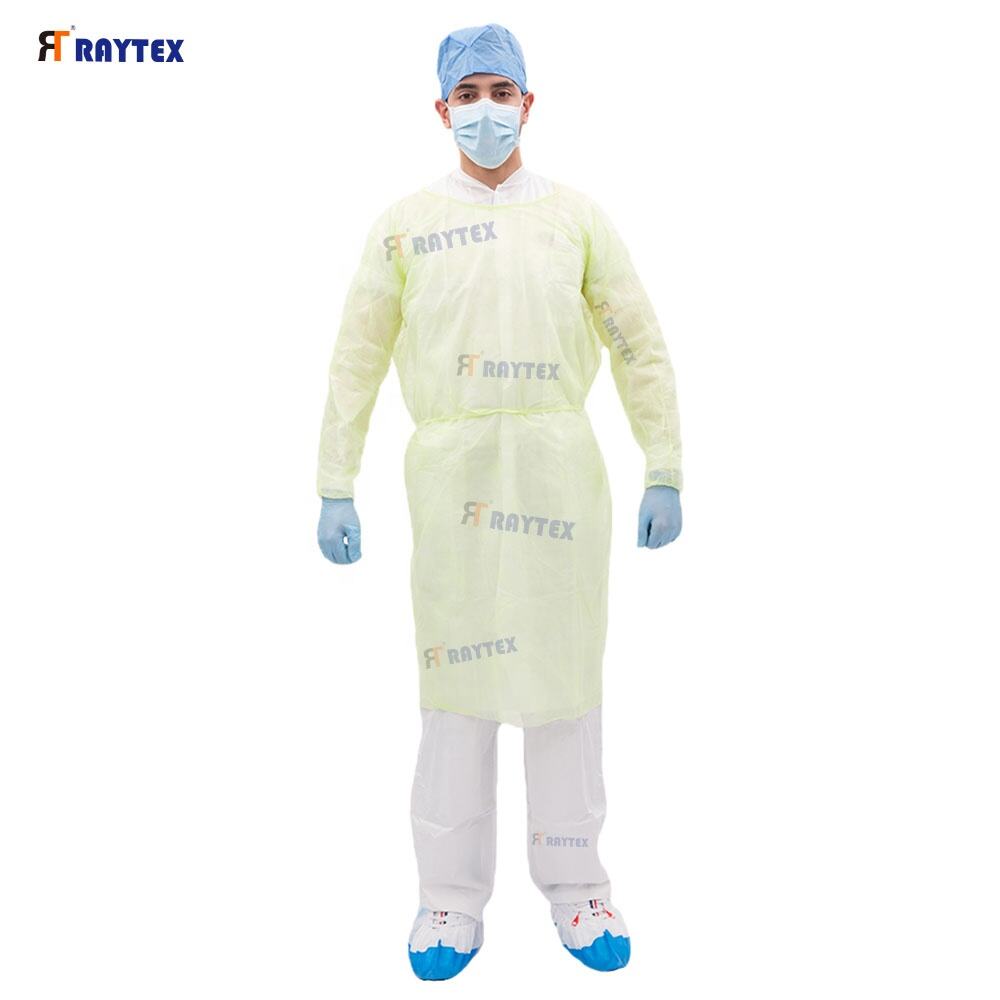Isolation gowns for laboratory accident isolation are specialized protective garments designed to contain spills, splashes, or airborne contaminants during laboratory incidents, such as chemical leaks, broken glass, or exposure to biological agents, while protecting both the injured worker and response personnel. These gowns are constructed from chemically resistant materials like nitrile-coated polyester, Tyvek, or polypropylene blends, chosen for their ability to repel a wide range of substances—including acids, bases, solvents, and biological fluids—while maintaining structural integrity. The design focuses on rapid deployment and comprehensive coverage: a knee-length or full-length style with a front closure (often using ties, hook-and-loop, or zippers) allows quick donning during emergencies, with long sleeves and elastic cuffs to prevent skin exposure. Many gowns feature a high neckline and a back panel that covers street clothing, ensuring no gaps where contaminants could reach the body. Durability is tailored to lab hazards, with tear-resistant fabric and reinforced seams that withstand contact with sharp objects (e.g., broken glass) or rough surfaces during cleanup. The material is also tested for permeability under pressure, ensuring it resists liquid penetration even when splashed with large volumes—critical for containing chemical spills or biological waste. Compliance with laboratory safety standards is essential, with gowns meeting EN 13034 (Protective clothing against liquid chemicals


